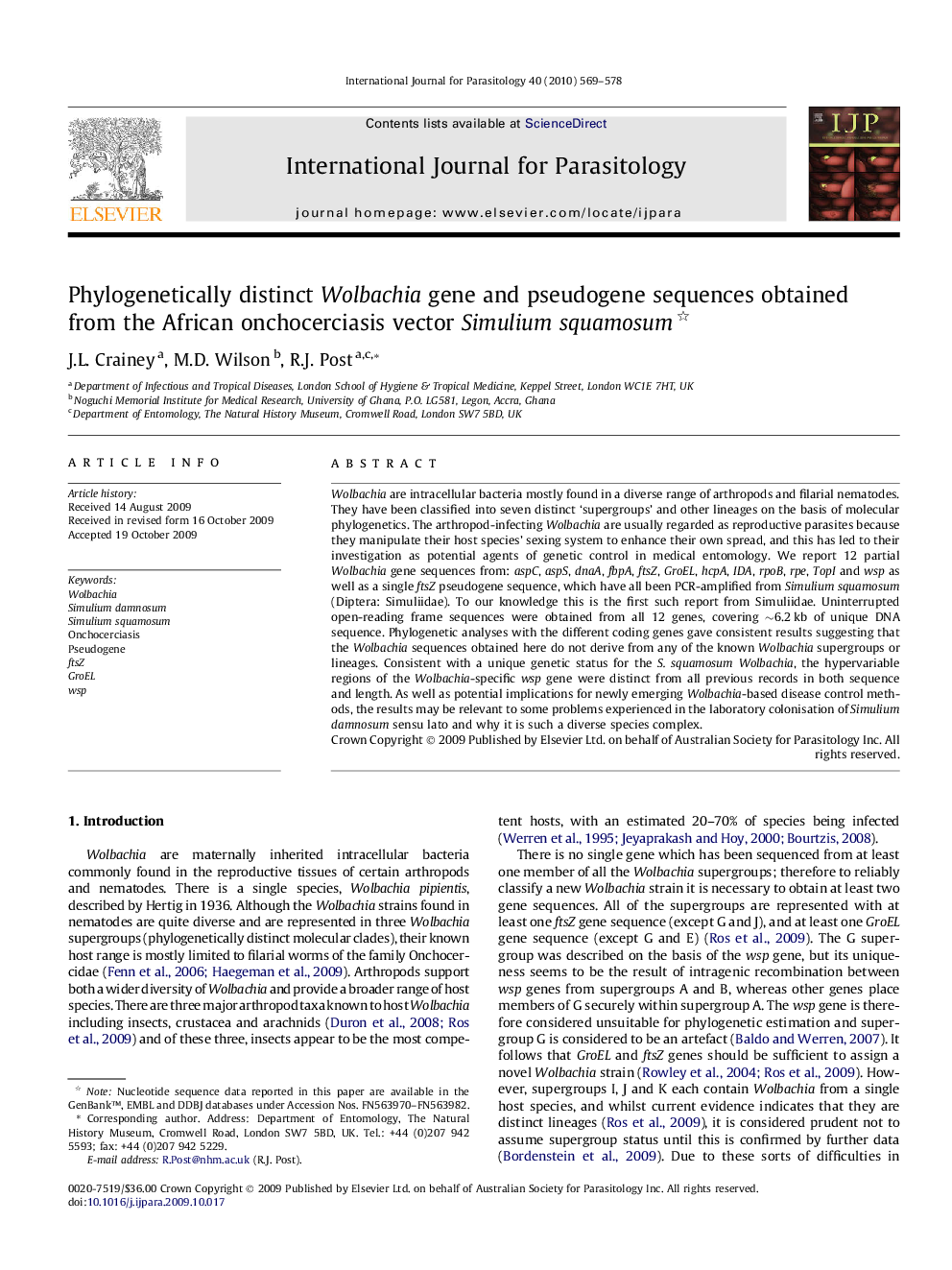| کد مقاله | کد نشریه | سال انتشار | مقاله انگلیسی | نسخه تمام متن |
|---|---|---|---|---|
| 10972791 | 1107318 | 2010 | 10 صفحه PDF | دانلود رایگان |
عنوان انگلیسی مقاله ISI
Phylogenetically distinct Wolbachia gene and pseudogene sequences obtained from the African onchocerciasis vector Simulium squamosum
دانلود مقاله + سفارش ترجمه
دانلود مقاله ISI انگلیسی
رایگان برای ایرانیان
کلمات کلیدی
موضوعات مرتبط
علوم زیستی و بیوفناوری
ایمنی شناسی و میکروب شناسی
انگل شناسی
پیش نمایش صفحه اول مقاله

چکیده انگلیسی
Wolbachia are intracellular bacteria mostly found in a diverse range of arthropods and filarial nematodes. They have been classified into seven distinct 'supergroups' and other lineages on the basis of molecular phylogenetics. The arthropod-infecting Wolbachia are usually regarded as reproductive parasites because they manipulate their host species' sexing system to enhance their own spread, and this has led to their investigation as potential agents of genetic control in medical entomology. We report 12 partial Wolbachia gene sequences from: aspC, aspS, dnaA, fbpA, ftsZ, GroEL, hcpA, IDA, rpoB, rpe, TopI and wsp as well as a single ftsZ pseudogene sequence, which have all been PCR-amplified from Simulium squamosum (Diptera: Simuliidae). To our knowledge this is the first such report from Simuliidae. Uninterrupted open-reading frame sequences were obtained from all 12 genes, covering â¼6.2Â kb of unique DNA sequence. Phylogenetic analyses with the different coding genes gave consistent results suggesting that the Wolbachia sequences obtained here do not derive from any of the known Wolbachia supergroups or lineages. Consistent with a unique genetic status for the S. squamosumWolbachia, the hypervariable regions of the Wolbachia-specific wsp gene were distinct from all previous records in both sequence and length. As well as potential implications for newly emerging Wolbachia-based disease control methods, the results may be relevant to some problems experienced in the laboratory colonisation of Simulium damnosum sensu lato and why it is such a diverse species complex.
ناشر
Database: Elsevier - ScienceDirect (ساینس دایرکت)
Journal: International Journal for Parasitology - Volume 40, Issue 5, April 2010, Pages 569-578
Journal: International Journal for Parasitology - Volume 40, Issue 5, April 2010, Pages 569-578
نویسندگان
J.L. Crainey, M.D. Wilson, R.J. Post,